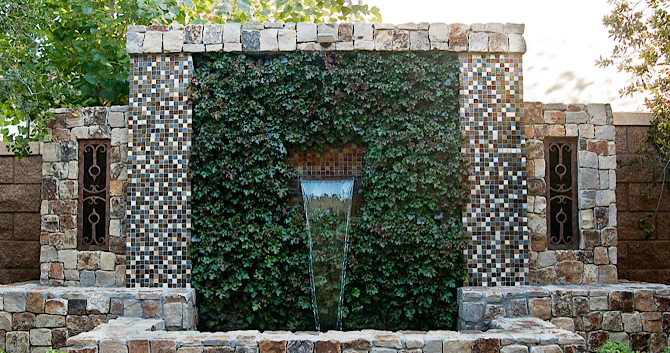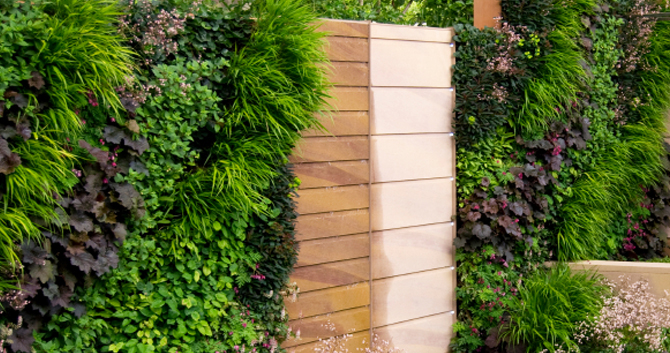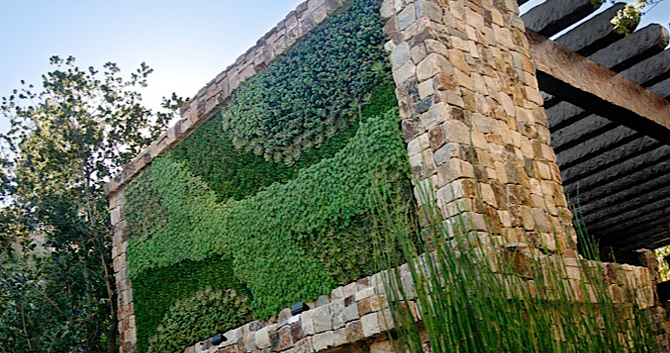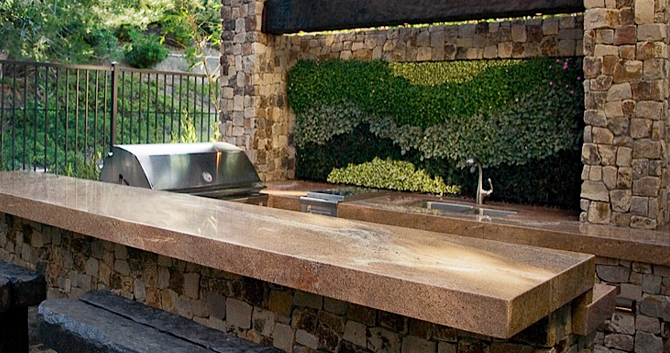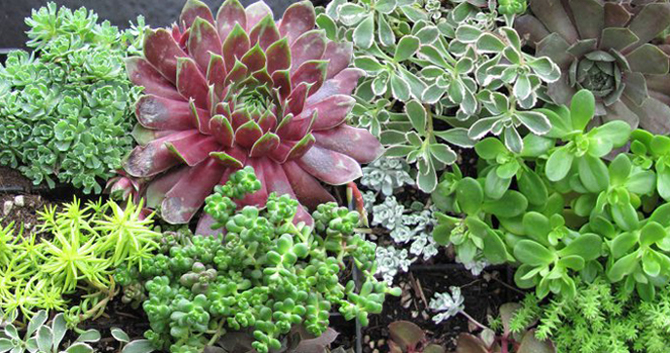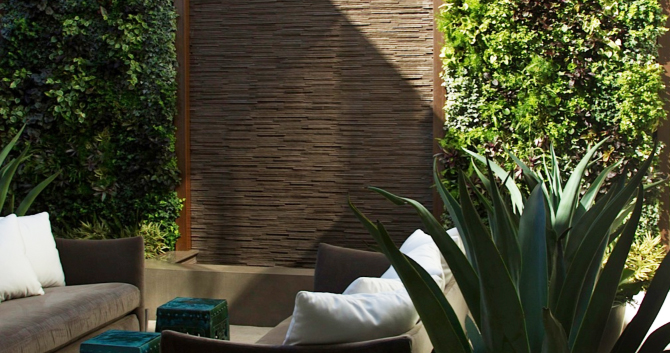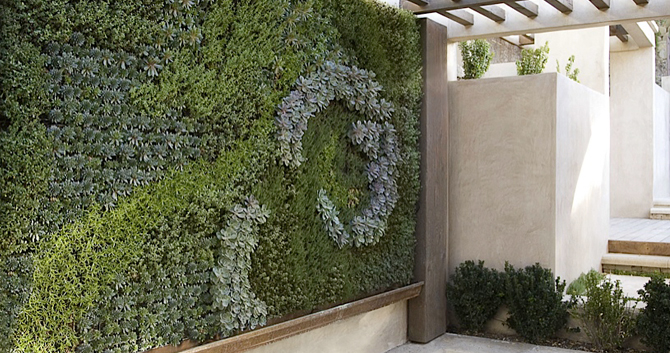Vertical gardens, or “living walls,” are a modern solution to the age-old problem of gardening in small spaces on balconies or patios, and along pools and walkways. Rather than resorting to traditional ivy that covers walls but adds little interest, or grouping containers that add color but take up precious space, vertical gardening takes full advantage of the largest expanse available—those barren walls that were previously off-limits for gardeners.
Although ivy-covered walls have long added charm to cottages and prestige to universities, today’s vertical gardens take things to a whole new level. This modern interpretation was first conceived in France by botanist Patrick Blanc, who unveiled his concept for a living wall in 1988 at the Museum of Science and Industry. With their natural allure for urban gardeners, vertical gardens quickly spread to the balconies and hotels of Paris and have since been embraced by gardeners, landscape designers, and interior decorators worldwide.
 Vertical vegetable gardens elevate edibles to an artform
Vertical vegetable gardens elevate edibles to an artform
Imagine a wall covered in lush plants, alive with color and texture, creating a sense of calm and seclusion. Instead of a summer afternoon with heat radiating from the walls, driving you inside to the comfort of air conditioning, vertical gardens keep things cool, with surfaces only 4-5 degrees higher, and sometimes actually cooler, than the outside air.
They are also a great way to expand a vegetable garden, elevating compact edibles like lettuce, spinach, strawberries, pansies, and geraniums above the reach of rabbits and other unwanted visitors.
 Succulents are well-suited to vertical gardens with compact forms that tolerate dry periods better than most plants
Succulents are well-suited to vertical gardens with compact forms that tolerate dry periods better than most plants
There is also a place for vertical gardens indoors, replacing artwork with framed combinations of indoor plants that purify the air to create a healthier home. Instead of a kitchen windowsill crowded with potted herbs, a vertical garden creates edible artwork you can snip and sprinkle directly into sauces, salads, or marinades.
Vertical gardens use little to no soil so thirsty roots need proper watering to keep plants from drying out. Professional installations use pipes or hoses to drip water throughout an absorbent material that holds the plants, sometimes taking advantage of the circulating water to incorporate waterfalls, adding soothing sounds and flowing movement to the peaceful setting.
 Euphorbia is a popular choice for its color and form
Euphorbia is a popular choice for its color and form
Less elaborate options available to homeowners have built-in reservoirs that make watering as simple as filling a container. With this built-in water system, vertical gardens are well suited to arid areas, keeping things from drying out like they might in a horizontal garden.
When choosing plants for a vertical garden project, look for combinations that blend colors and textures, create contrast, and add fragrance. Popular favorites among professional designers include bromeliads, bird’s nest fern, euphorbia, heuchera, hosta, spider plants, pathos, nephytes, and sword fern. Trailing vines add fluidity, while scented herbs like sage, mint, rosemary, lemon thyme, and oregano attract butterflies and hummingbirds. Succulents like aeonium, stonecrop, hens and chicks, and sedum are particularly well suited for verticalscaping, adding compact sculpted forms to the overall design while tolerating dry periods better than most plants.
 Combine herbs and edible flowers like nasturtum, chive, strawberries, and thyme
Combine herbs and edible flowers like nasturtum, chive, strawberries, and thyme
Creating a vertical garden is not as intimidating as it appears at first glance. Depending on your ambitions, there are professionals who will create custom designs, off-the-shelf plans that guide you through the process, and ready-made systems at your local garden center. Professional installations include a frame that attaches to the wall, a waterproof barrier that protects the wall, an absorbent material that holds the plants in place, and a submersible pump and tubing to circulate the water.
Do-it-yourself versions use angled planters with built-in watering features that attach to a wall with brackets. Newer options have modular systems, enabling you to build a vertical garden from as few as a single cell to as many as fits the wall. These are a great way to get started to see how a vertical garden fits into your overall lifestyle.

